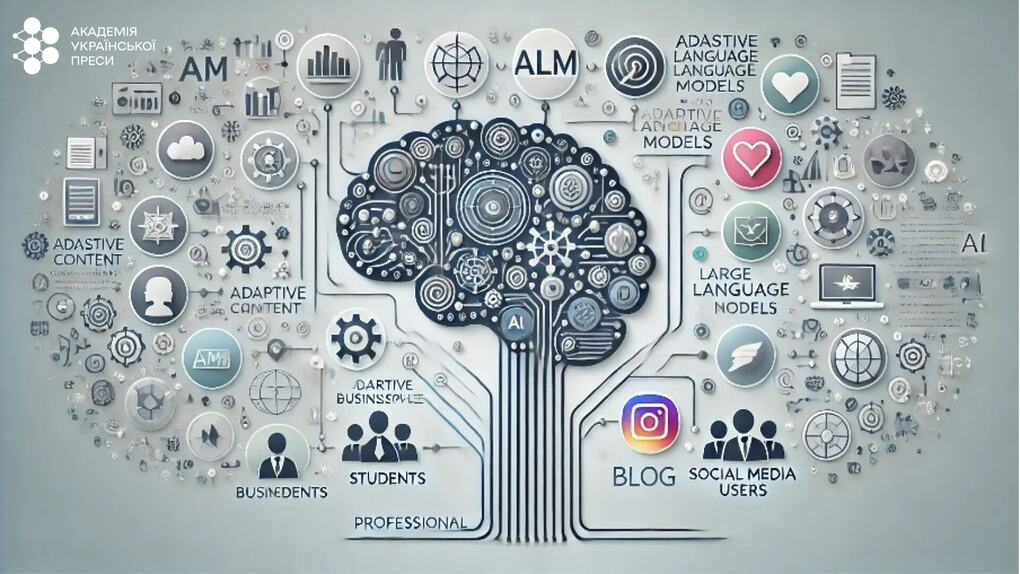
For the first time, the capabilities of large-scale language models (LLMs) make it possible to create content that feels customized - not just translated, but intuitively adapted to the needs of a specific audience. It's more than just replacing words. What is the essence of the new content order, and why is adaptability more than a trend?
This is the fourth blog on the topic of LLM opportunities and functioning. You can read the first, second and third on the resources of the Academy of Ukrainian Press.
Adapting to differences from LLM
LLMs are able to do something extraordinary: they not only know another language, they capture the context, cultural characteristics, and values that distinguish one audience from another. As a result, the content feels as if it was written by a person who really understands the local “language”, with all the cultural nuances that are not present in a regular translation. And while translation used to be about replacing one set of words with another, nowadays content can be rewritten for each specific audience. You can read more about this in our third blog.
And the most interesting thing is that when you adapt a message, you can't just limit yourself to a different set of words. Audiences react differently to the content. Imagine promoting a product in the US and in Ukraine. The US audience will like a short summary with infographics and clear benefits, while the Ukrainian audience will want to feel the social weight and reliability of the product through real user reviews. The model creates content as if it were written by a local. This is a whole new level of adaptability.
Imagine having the ability to customize content not only for the language, but also for the personality type. At a training for journalists, for example, I rewrote the same news story by simply changing a couple of words in the prompt, targeting it at students, civil servants, pensioners, or entrepreneurs. The language model selects the words and phrases that make it seem as if the text was written specifically for you. It doesn't matter whether it's youth slang, formal style, or jargon - the model picks up on it and adapts the content accordingly.
I have no doubt that in each case, a real journalist would have written it better, but we usually don't have time for such nuances. The LLM allows us to do this quickly and efficiently.
How LLMs adapt content for different audiences
Content adaptation really starts with the understanding that each audience has its own cultural and social connotations. Some audiences want to see authoritative information, others value straightforwardness, and still others seek emotional engagement. The model reproduces content so that it “speaks” to the audience, as if someone is speaking to them in a language they understand – literally and figuratively. It can adapt the message to take into account mental differences and cultural context, which allows it to resonate more with different user groups.
One of the key challenges of modern marketing is to create content that will not only “work”, but will hit the spot for each individual social network. The secret? Using LLMs that take into account the style and format for each platform. This allows brands to create content that speaks: memes for young people, facts for businesses, video reviews for consumers.
LLMs help to “get used to” the culture of each platform, capturing the key tones and styles of communication that are relevant on each of them. This allows you to achieve fast and personalized communication that is more likely to engage your audience. And you don't need any training, behavioral analysis, or hashtag popularity research to do this – the big language model adapts everything for you.
Can adaptation be fully automated?
An interesting question facing LLM technology is whether it can completely replace humans. Automation of text without human intervention looks promising, but even the best language models are not yet able to cover all human nuances. Humans add an emotional tone to content, an intuitive understanding of context that is difficult to code, and personal life experience that a model does not have at all. Models are still learning. And while automation can help create structured and understandable text, humans add the “soul” of content that creates a real connection with the audience.
Therefore, it is likely that the best results will come from combining human creativity with the capabilities of an LLM. Technology can do most of the work, but in the end, it is the human who gives the content the accents that make it unique and influential.
As a result, we have a new reality: content can sound like it was written by a human being, understanding all the mental, cultural, and linguistic differences. This makes it possible to create something more than just text – content that resonates. And this is not just a way to adapt marketing messages, but a new order where content can freely follow the needs, preferences, and values of its audience, tailoring the message to each one.
#LLM